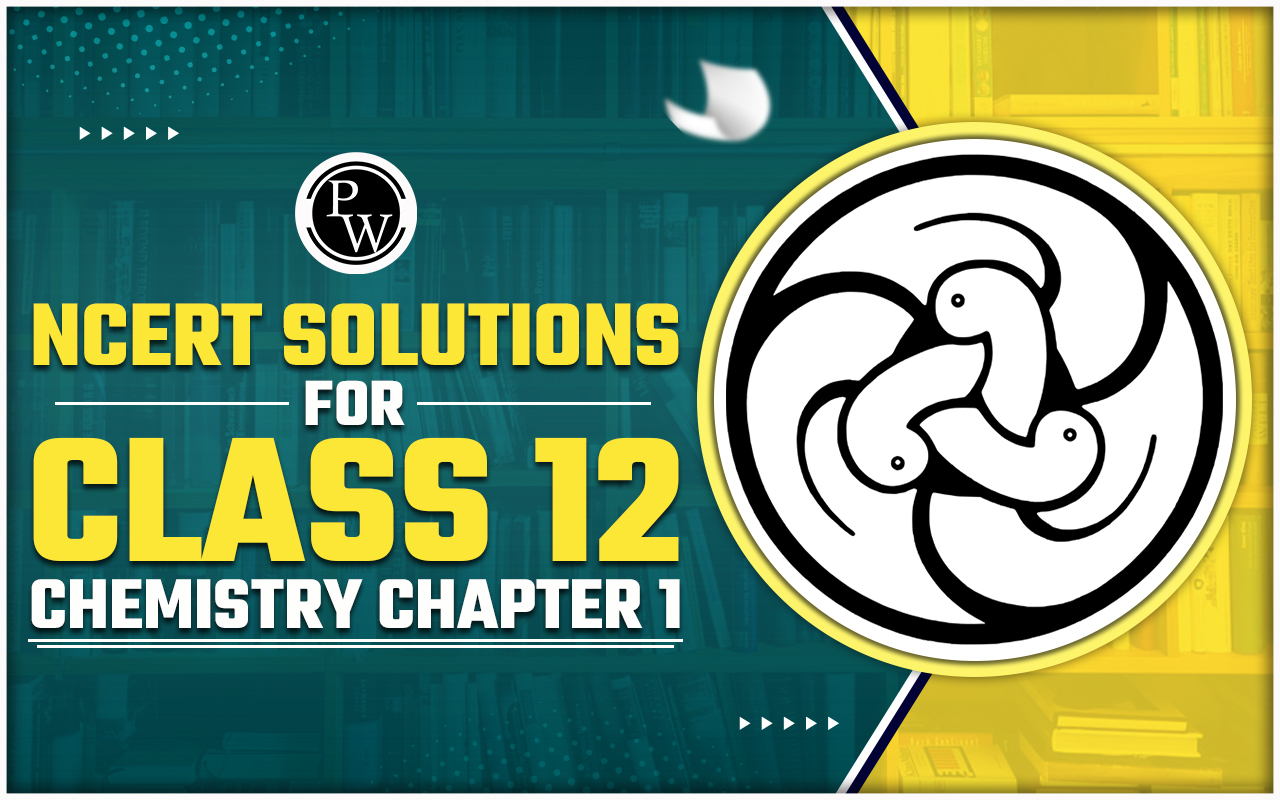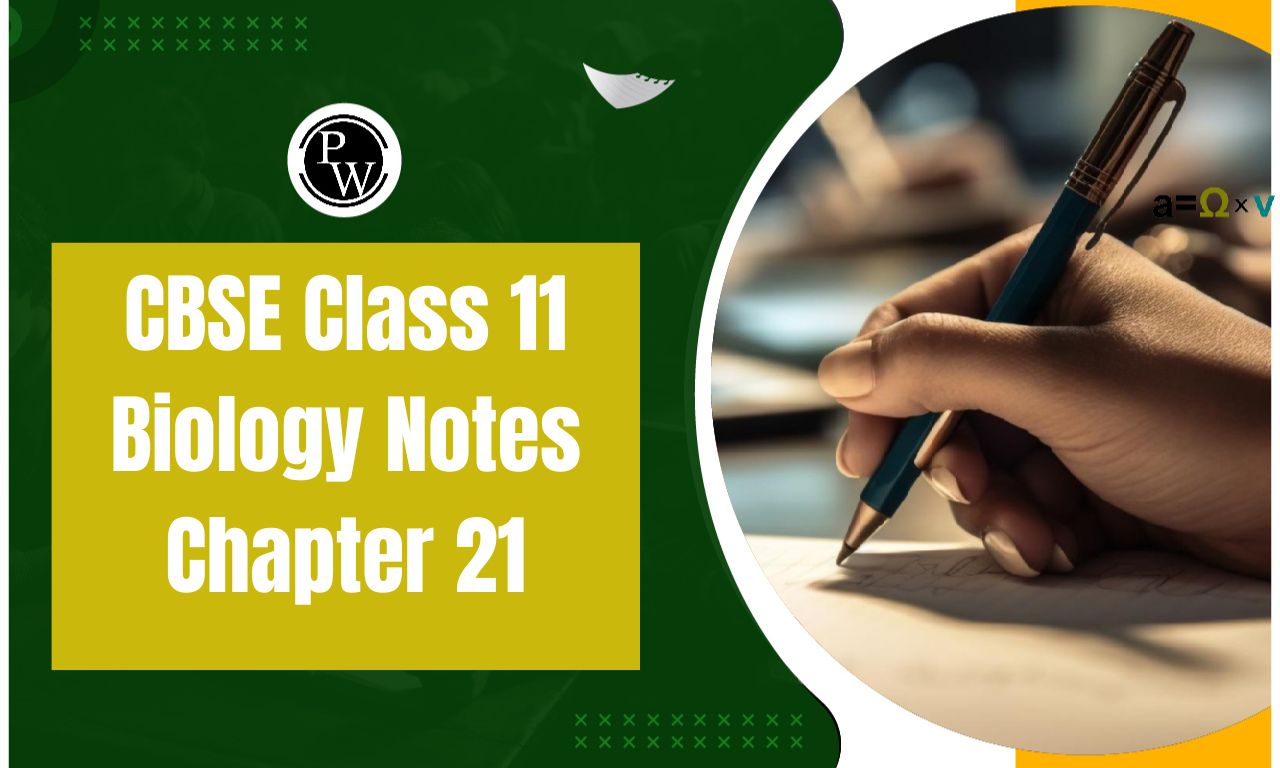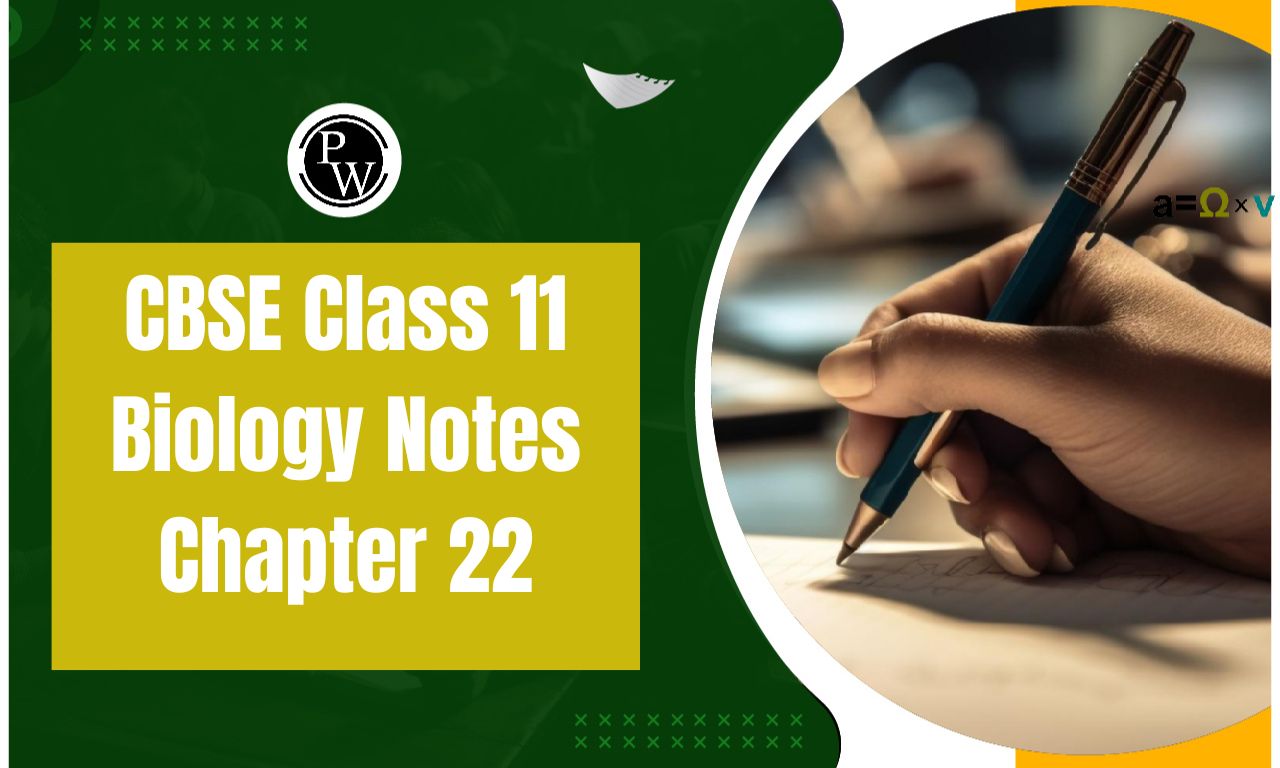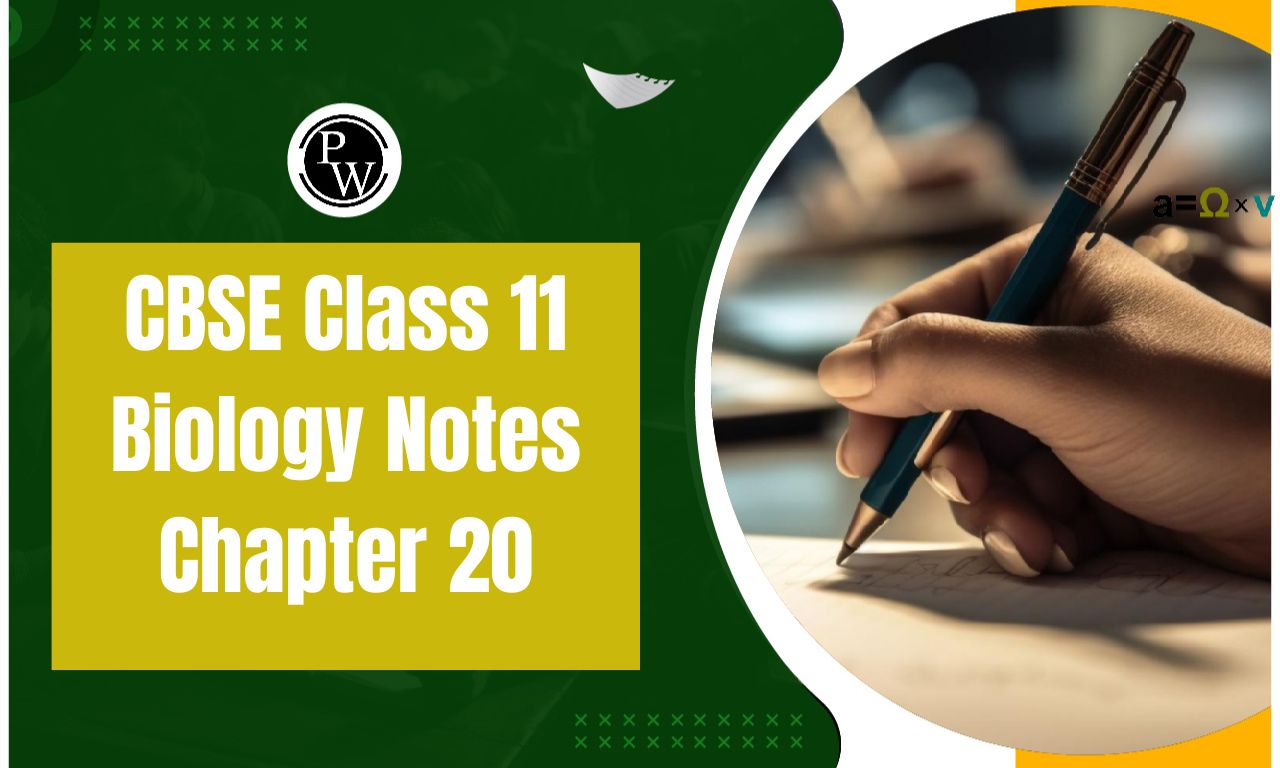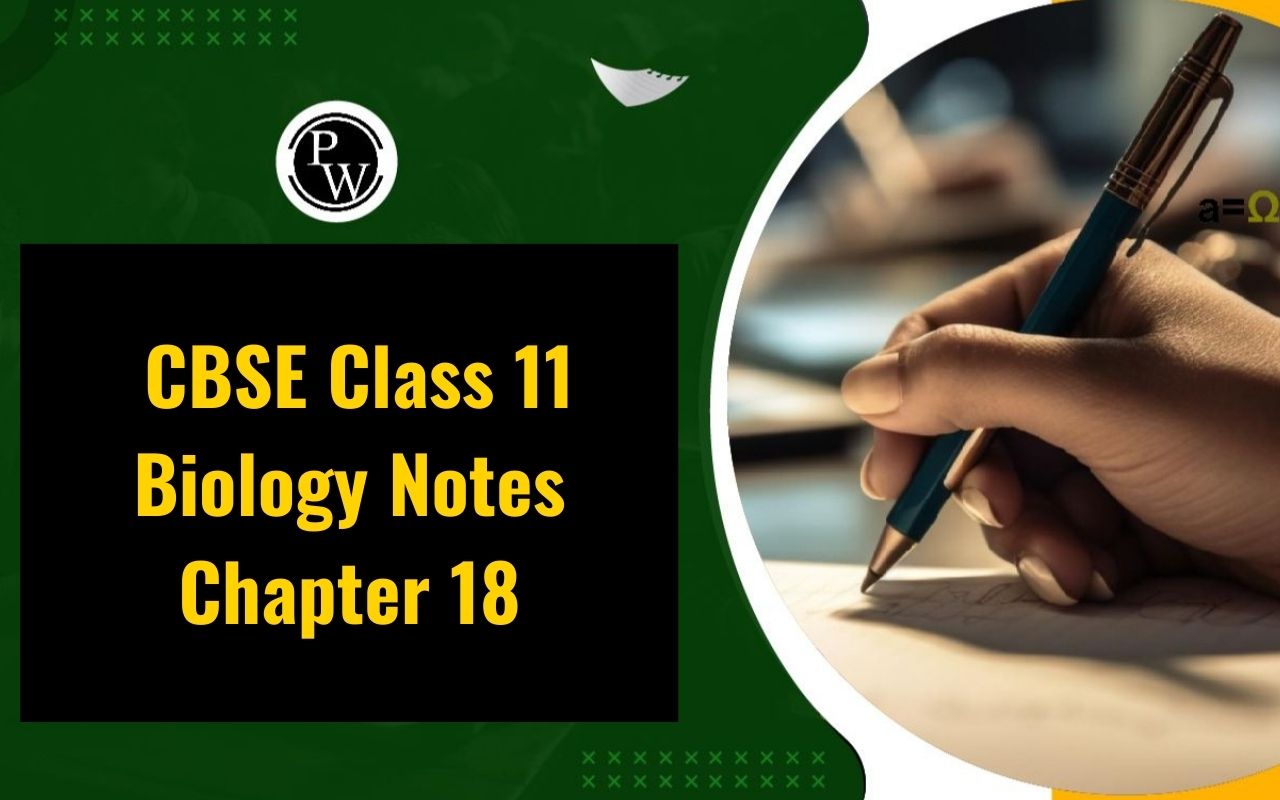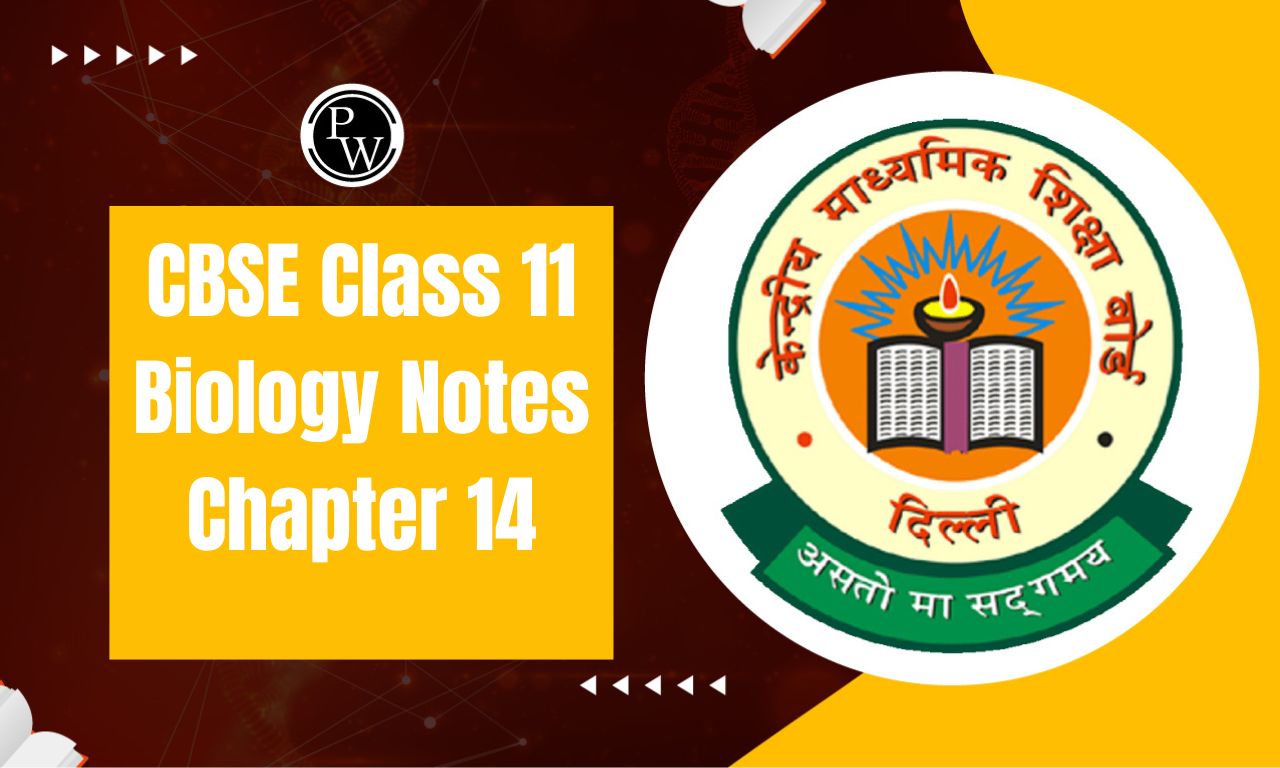
CBSE Class 11 Biology Notes Chapter 16: You'll get a detailed explanation of chapter 16 in the biology syllabus from the CBSE Class 11 Biology Notes Chapter 16. This test question will be very beneficial both for exam preparation and during the test. These solutions include critical question answers as well as solved questions that may be asked throughout the test.
You may easily review for your class 11 biology examinations with the help of these solved problems from the Digestion and Absorption revision notes. CBSE Class 11 Biology Notes Chapter 16 on digestion and absorption are simple, high-scoring topics. You won't have any questions throughout the exam if you follow these solved examples. These answers will aid in your critical and logical understanding of the CBSE Class 11 Biology Notes Chapter 16.CBSE Class 11 Biology Notes Chapter 16 Digestion and Absorption Overview
These notes from CBSE Biology Class 11 Chapter 16 are broken down into easy steps. We can understand these answers with ease, and they immediately dispel any uncertainties. The CBSE Class 11 Biology Notes Chapter 16 on digestion and absorption will make the material engaging and enjoyable to study. Having these answered problems ready will assist with both homework and tests. The notes for CBSE biology class 11, chapter 16, make it simple to prepare for and finish the test. Any question pertaining to Economics in Course 12 can be resolved with the assistance of the given solution. Chapter 16 notes for CBSE Biology Class 11 are an excellent resource for learning the fundamentals of accounting and finance. Digestion and Absorption CBSE Class 11 Biology Notes Chapter 16 is a simple and grade-friendly chapter.CBSE Class 11 Biology Notes Chapter 16 PDF
Biology 11th class The revision notes on digestion and absorption indicate that these processes involve the alimentary canal, a lengthy passageway that extends from our mouth to the anus. It is made up of the gallbladder, salivary gland, stomach, large and small intestines, and portions of our mouth. Every one of these organs, together with its roles and capacities, are vividly described in Notes of Digestion and Absorption Class 11. The CBSE Class 11 Biology Notes Chapter 16 PDF also include a thorough explanation of the functions of all the salivary glands and the components that make up our mouth. This chapter includes thorough explanations and illustrations of every organ.CBSE Class 11 Biology Notes Chapter 16 PDF
CBSE Class 11 Biology Notes Chapter 16
The area of biology known as "human physiology" aids in the investigation of numerous biological processes. Digestion, breathing, blood circulation, excretion, movement and locomotion, neural control and coordination, etc. are among the many life activities. Known as the founding father of modern physiology is William Harvey. Food is a vital source of nutrients and energy that the body needs for growth, development, maintenance, and daily functions. The substances present in food are known as nutrients, and nutrition is the process of getting food. Food components include proteins, lipids, carbs, vitamins, minerals, and so on. In addition to being essential for carrying out the body's numerous metabolic processes, water also keeps the body from becoming dehydrated. The process of breaking down complex food particles into smaller, more absorbable chemicals or food particles is known as digestion. There are two processes involved in digestion: mechanical processes and biochemical activities. In contrast to the biochemical processes, which involve breaking the covalent bonds of inorganic food molecules and hydrolyzing them into simple food molecules, the mechanical processes involve breaking down complex food particles into simple food particles through actions like tearing, cutting, chewing, crushing, rolling, pressing, etc.Digestive system
The human digestive system is composed of various organs that include the well-developed alimentary canal, and associated glands.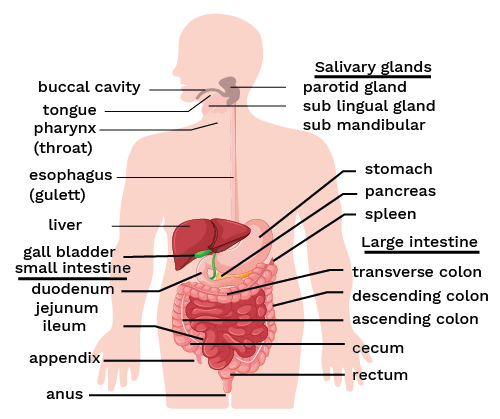
Alimentary canal
It is a muscular, lengthy, coiled tube that extends from the mouth to the anus and is between 6 and 9 metres long. From the mouth to the anus, glandular epithelium lines its inner walls. It is made up of several organs arranged in a staged manner, starting from the mouth, oral cavity or buccal cavity, pharynx, oesophagus, stomach, small intestine, large intestine, and finally the anus. It is lined by glandular epithelium. A network of ducts connects the major glands to the alimentary canal. Salivary, stomach, liver, pancreatic, gallbladder, and intestinal glands are among these glands.Mouth and Oral cavity
The upper maxilla (upper jaw) and lower mandible (lower jaw) are the two jaws that make up the oral cavity. The lateral walls of the oral cavity are found in the cheeks. At the hind region of the roof, there is a small extension that is finger-shaped and called the uvula. The stratified squamous epithelium is found in the buccal cavity and helps in secreting the mucous that results in the lubrication of the cavity. The mouth is the transverse slit-like opening around which two lips are present. The muscular tongue is located at the base of the oral cavity and is connected to it by the narrow frenulum fold. They carry out several tasks, including ingesting, swallowing, and chewing food. They also have taste buds, which aid in the recognition of four primary tastes in undigested food: sweet, sour, bitter, and salt. When the moist meal comes into contact with the taste buds, the sense of taste is experienced.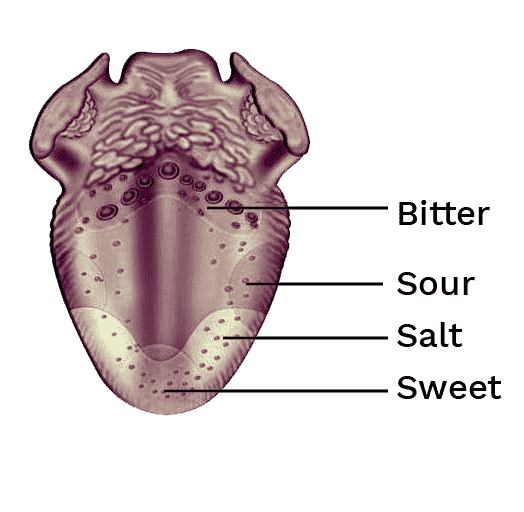
Teeth
The masticatory apparatus in the skin covering the jaw is made up of specialised cells. The dentition's overall shape, number of teeth, and arrangement. Three forms of dentition have been identified in humans: diphyodont, heterodont, and codons. The upper and lower jawbones have teeth sockets, or cavities, as part of the thecodont dentition. An adult human's mouth contains 32 teeth, 16 of which are located in each jaw. Based on the roles they provide, teeth can be classified into four categories: canines, molars, incisors, and molars. Heterodontic dentition is the state in which different types of teeth are present. Food is chopped into smaller bits using scissors. They have sharp cutting edges and are designed like a chisel.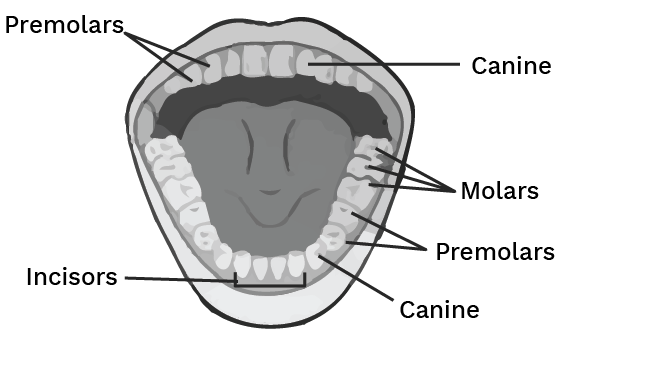
Canines: They have a dagger-like form and are in charge of shredding food.
The powerful teeth at the end of the jaws, called premolars and molars, are in charge of crushing and grinding food. The man's final four molars—two from his upper and lower jaws, respectively—won't erupt until he or she is 17 or 18 years old. The wisdom teeth are these four molar teeth.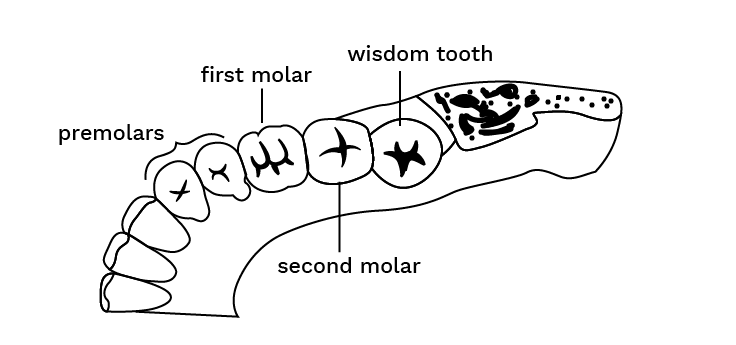 The milk teeth and permanent teeth are the two sets of teeth that a person will ever have. Diphyodont dentition is the term for this disorder.
When children first erupt, milk teeth emerge; they are fragile and transient. Each jaw has ten teeth, and they lack molars. There are twenty premolars in all. The dental formula describes how teeth are arranged in the jaws and how many there are.
The milk teeth and permanent teeth are the two sets of teeth that a person will ever have. Diphyodont dentition is the term for this disorder.
When children first erupt, milk teeth emerge; they are fragile and transient. Each jaw has ten teeth, and they lack molars. There are twenty premolars in all. The dental formula describes how teeth are arranged in the jaws and how many there are.
Pharynx
the muscle channel that aids in digestion and respiration. It has a funnel-like form. While the nasal cavity from above opens into the pharynx, the buccal cavity extends into it. After that, it will open posteriorly into the trachea and oesophagus. The pharynx's entry into the trachea, known as the glottis, is constantly open when breathing occurs. The flap-like structure called the epiglottis covers the glottis and helps keep food particles from travelling into the windpipe while swallowing rather than the food pipe. The uvula shuts the epiglottis to allow it to close into the nasal cavity.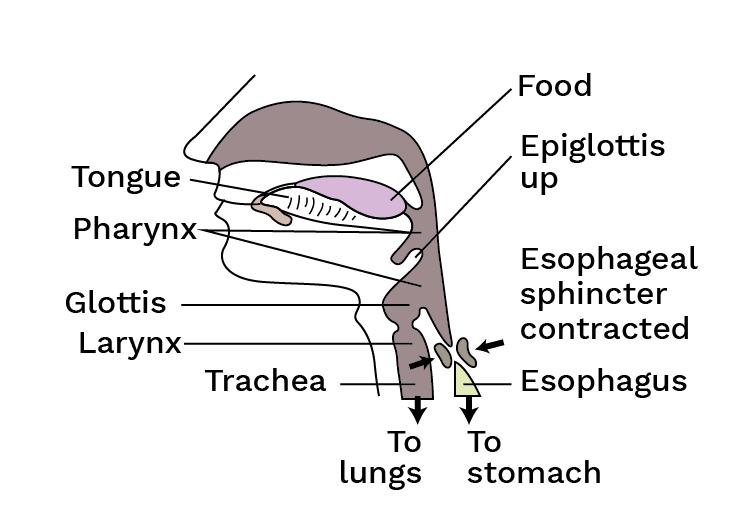
Stomach
It is the largest portion of the alimentary canal, located in the upper abdominal cavity beneath the diaphragm, and has a C-shaped structure. The three components of it are the fundus, cardiac, and pylorus. The cardiac zone, where the oesophagus opens, is close to the fundus region. When swallowing food, it facilitates the entry of air into the stomach. The middle area that aids in food storage is the heart.
Small Intestine
It is located in the abdomen area and is the longest segment of the alimentary canal. It is coiled, thin, and tubular. The small intestine measures between 7 and 9 metres in length and 2.4 centimetres in diameter. The duodenum, jejunum, and ileum are the three sections that make up the small intestine. The jejunum is located much later than the duodenum and is observed to be significantly longer. The small intestine's ileum is the last and longest section. Its diameter is roughly 2 to 3 cm, and its length is approximately 7 m. This very coiled area opens into the large intestine's lower right abdominal cavity. The mesenteric portion of the small intestine is made up of the ileum and jejunum together. The majority of digestion and absorption occurs in the small intestine. Big gut: The large intestine comes after the small intestine. With a length of 2 m, it is wider but shorter than the small intestine. It is separated into the colon, rectum, and caecum areas. The caecum is a small pouch seen in humans, but it is a huge pouch found in horses and asses. The vermiform appendix, a finger-like structure discovered in the caecum, is determined to be non-functional and falls under the category of a vestigial organ.Serosa , the outermost layer of the alimentary canal, is composed of fibres. It is composed of some connective tissue and a thin layer of mesothelium.
The layer located outside the submucosa is called the muscularis . It consists of two layers: an outside layer made up of longitudinal muscles and an interior layer made up of circular muscles. In certain places, an oblique muscle layer is also visible.Submucosa: This layer lies outside the mucosa and is composed of blood and lymph vessels, which contain nerves, as well as the loose connective tissue layer. The duodenal glands are located in the submucosal area.
Mucosa: This layer, which is friction-resistant and provides moisture, lines the interior of the alimentary canal lumen. The secretory and absorptive cells make up the epithelium. The goblet, which serves as a lubricant and aids in mucus secretion to protect the epithelium from damage and digestion, is a component of the epithelium.
When the stomach is empty, the mucosa and submucosa fold together to form the rugae, which are present in the stomach. When food enters the stomach, these folds will aid in its expansion and eventually disappear. The surface of the small intestine mucosa contains many projections that resemble fingers, known as villi.Digestive glands
The glands that are a part of the alimentary canal and aid in the digestion of dietary ingredients are referred to as digestive glands. The pancreas, liver, and salivary glands are among these glands.Salivary glands: They are the digestive glands that result in the secretion of saliva and are found in the oral cavity. In humans, salivary glands are three in pairs:
(i) Parotid glands
(ii) Sublingual gland
(iii) Submandibular or submaxillary glands.
Disorders of the digestive system
Constipation, indigestion, diarrhoea, vomiting, and jaundice are among the prevalent digestive system illnesses.Jaundice: The yellowing of the skin, eyes, and mucous membranes is caused by the buildup of bile pigments in the blood.
Vomiting: This happens when the stomach's contents are forced out of the mouth due to a blockage in the digestive tract or reverse peristalsis. It is a reflex that is managed by the vomiting centre located in the brain's medulla oblongata. As soon as nausea sets in, vomiting happens.
Diarrhoea: The symptoms of diarrhoea, which are brought on by improper water absorption, are often watery stools. This lowers the amount of food absorbed and causes an irregular frequency of bowel movements as well as a watery faecal discharge.
Benefits of CBSE Class 11 Biology Notes Chapter 16
- Helps in the understanding of fundamental ideas related to human existence. The study of biology can even lead to the understanding and analysis of human body temperature.
- These Notes have been prepared by our specialists in compliance with the CBSE norms. Upon carefully reviewing the previous year's exam papers, the notes emphasised a few of the most crucial subjects.
- As a result, students can go over the notes and identify the chapters that will be heavily weighted on the test. This will assist them in formulating a plan in advance to achieve high grades.
- Students have limited time before exams for revision because they have to go through the chapter's multiple times. Make good use of the Biology Notes Class 11 PDF. It will save a tonne of time this way.
CBSE Class 11 Biology Notes Chapter 16 FAQs
Which is the most difficult chapter in class 11 Biology?
What is digestion class 11 Biology notes?
What is the short note of digestion and absorption?


